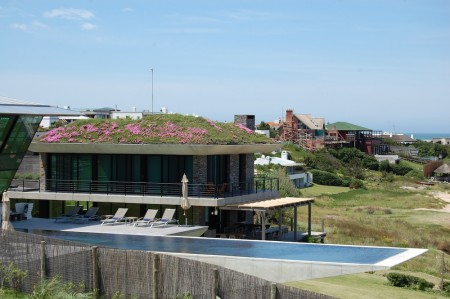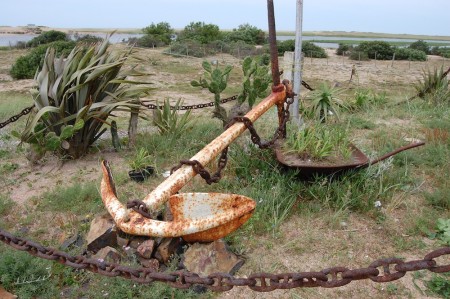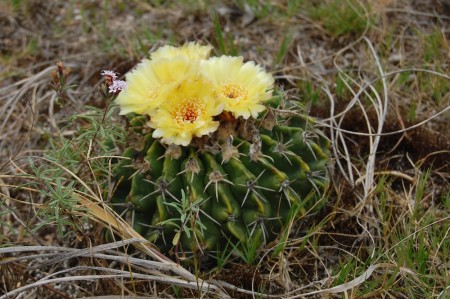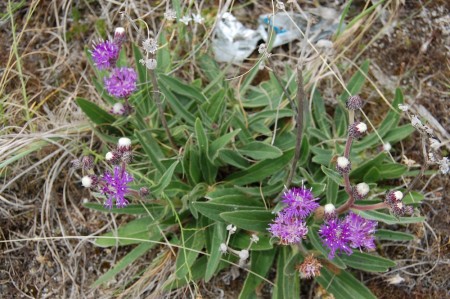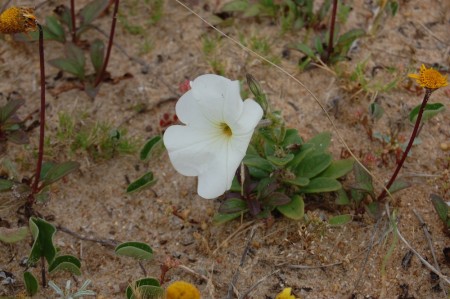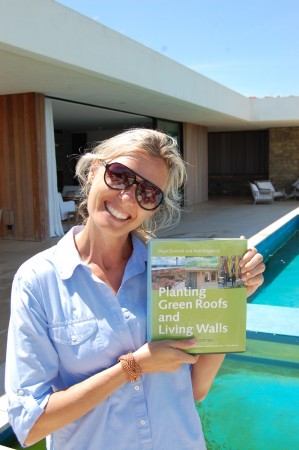
Karena Hogg, a Uruguayan landscape designer waves a copy of the book I wrote with Nigel Dunnett on green roofs.
For the third time in five years I’m lecturing in Spanish-speaking America (you can read my accounts of lecturing in Mexico here, and here – that was an experience!) . Being interpreted (see my recent post about Argentina). We always have the same discussion – why aren’t there more books and material on gardening in Spanish? So many books are either translations from English or books published in Spain, and not particularly relevant to the Americas. Interest in gardening and landscape is growing in South America, and the Estados Unidos itself is gradually turning bilingual. Any visitor to the US, especially the south-west, is aware of how much garden work is done by workers from Mexico and further south; some of whom are now settling and setting up their own garden maintenance businesses. Gardening is turning Spanish, but where are the books and other media?
There is occasional talk of setting up some sort of American Spanish garden/landscape online network. We had hoped someone in Mexico would do this, but that doesn’t look like it’s going to happen now. So if anyone is interested, send me an email (noel@noelkingsbury.com) and I’ll put you in touch with the others, and you can stop talking in English. 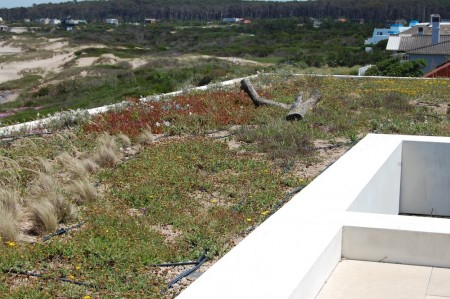
Karena is having problems with her green roof though. Plants just aren’t growing and it is still very gappy. In consultation with Amalia Robredo, the garden and landscape designer, who is my host, we decide it is not drought (as there is irrigation) but heat – as it does get very hot here in summer. Most drought-tolerant plants have very deep root systems which go down into moist, or at least cool conditions. So not surprisingly many just get cooked when their roots cannot do this.
Grindelia orientalis, a local plant of the Maldonado coast appears to succeed. In any case it makes a good garden plant, and one which Amalia, who is involved with getting native plants into cultivation, reckons is one of her best. It has nice leaves and looks great spilling over low walls.
There are no locally native sedums here, which would be the obvious thing in many places – they have worked on green roofs in Mexico for example. Introducing plants to grow on green roofs might be problematic. Look what happened here:
This is Karena’s neighbour – part of a hideous hotel complex (the main building is known locally as ‘the printer’), where they have a pink roof – with an African species of the Aizoaceae family, which are shallow rooted and succulent. Unfortunately thiey are very invasive and have already made many a hectare of the coast here a pretty pink, but smothering local plants. Another more notorious member of the family is the Hottentot Fig, Carpobrotus edulis, which is one of the worst invasive aliens on the California coast, here, and even back home in Cornwall. Karena does have some on her roof, as at least it ‘does the job’. More plant trialling for South America needed!
There is something about the seaside which makes people who would normally never garden, make little gardens, assemblages of material as much as anything. Touch of the Derek Jarman garden on Dungeness in Kent.
Just up from the little garden above, I spotted some primrose-yellow flowers on the ground. Further examination revealed cacti (ironically a species of the genus Notocactus). I always think of cacti living in recognisable deserts, along with cowboys smoking Marlboros. But in fact many grow alongside ‘ordinary’ plants. I have even seen 3m tall cacti in low coastal woodland.
Vernonia flexuosa, an attractive dry habitat plant which Amalia has also trialled for cultivation. There are several ironweeds here, totally different in habit to the better-known North American members of the genus. Look like long-lived perennials for the garden too.
“I’m a lonely little petunia”. Petunia axillaris is very common here. This one was growing on sand on the beach, but they pop up everywhere as an annual or short-lived perennial. Interesting that flower size is practically the same as the familiar bedding plant – breeders have added colours and stripes.
Read more about my trip to South America here. First impressions of Argentina.
and here about a leading light in naturalistic gardening and native plant landscaping in Uruguay.


